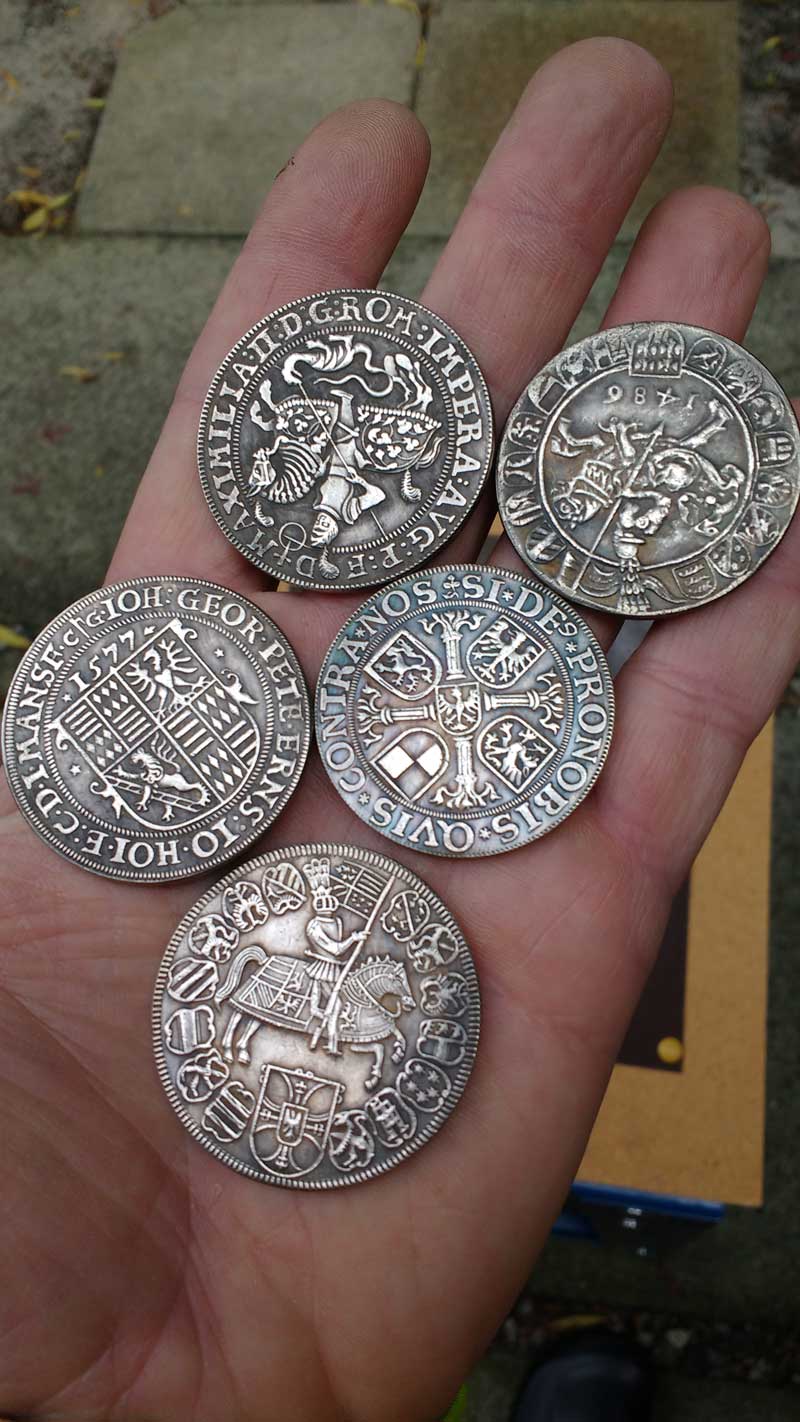
These coins are so different from any other coins I use for my hand made coin rings. They are replicas of medieval coins made in brass. Very good replicas with a lot of detail. I was asked once if I can make a coin ring from an old medieval silver thaler. I looked at the coin and it was very worn and after evaluating I think it was still worth over $500 USD. I denied as I was not so sure if this was a good idea. It turned out the coin was a modern reproduction made in silver but the owner bought it as a real medieval coin. Bummer. Well, I contacted this potential client two months later when we were getting ready to go to Medieval Festival in Balingup WA to tell him that I just made few medieval coin rings from very crisp medieval brass coins for the festival. He bought one ring and we sold few more at the festival. Here are few photos of my work progress hand making few of those medieval coin rings. I still have few coins left so feel free to order one if you would like to wear something very, very unique on your finger.
History of medieval coins
Medieval Europe didn’t need money. Or better say precious money. When you have a local trading and you agricultural farm produce all you need, money is not necessary to buy things that don’t exist or you don’t need them. In the XIII century, this changed. The need for a high value coin was the natural consequence of the trade that flourished. In Italy, Venice and Florence minted for the first time in centuries a gold coin, the ducato or florino. But gold was still a very rare metal. If you buy a ship, you will need either some hundred of thousands of small silver coins or some
hundreds of gold. But if you go to the market to buy an ox? In the XIV century, the first heavy coins appeared, with a weight of 5-10 gr, for example the half Guldengroschen of Archduke Sigismund of Tirol. With the weight of 15 gr, it was ideal for transaction with medium value. Also in England or France, similar coin appeared.
Because the mints needed silver, they were created near mines. In 1518, in a silver mine from Bohemia, now Czech Republic, a new coin was minted.
The mine, one of the few that produced silver in Europe in that time, was named St. Joachimstaler or “The valley of St. Joachim”, with taler meaning valley. The coin engraver from the mint that functioned around the mine decided to use the large quantity of silver to produce a large coin of silver that proved to be succesful in Germany. The coin, with around 26-28 gr, was named by the population the coin from St. Joachim’s Vallery and later simplified as Joachimsthaler or simply thaler.
In Germany, soon after every city and ruler started minting coins similar to the thaler. All of them, in similar size, were named thaler. In Scandinavia, the thaler was minted by the Swedish kings, who named it daler. In 1570 this coin reached Netherlands. The coin produced here depicted on one side a lion so it was named Lowenthaler or
Thaler with the lion. It was such a popular coin that circulated in all of Eastern Europe.
In Spain, the coin had a value of 8 real. It was nicknamed talar or tolar. When Spain controlled the Americas, this coin was used also
there. Because of the pronunciation, in America it became Dolar. In 1780-1790’s, when the US coin was adopted, the most popular coin of
the region was favored instead of the British pound, the official currency until 1776. More, from the symbol of a Spanish thaler, marked
with the sign 8 R the symbol $ appeared as a form of writing the 8.
If you made this far reading about medieval coins here is an interesting video on youtube:





















